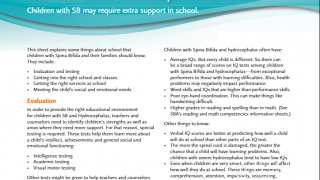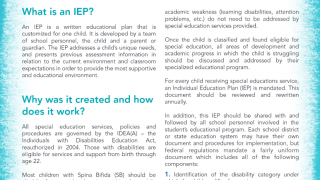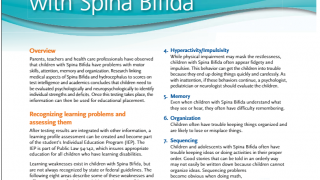Children with Spina Bifida have more difficulty developing reading comprehension during preschool, kindergarten, and elementary school.
Early skills that support reading comprehension are acquired through interactions with parents and peers at home, during play, in early childhood education settings, and in the community. During preschool, skills that contribute to the development of language skills lay the groundwork for reading comprehension once the child acquires the ability to read or decode words. During early elementary school, children with Spina Bida are often successful in developing single-word reading skills, but are likely to have more difficulty understanding what they are reading. Because of this, early screening of listening comprehension and reading comprehension are recommended for children with Spina Bifida, particularly around second or third grade.
This information sheet covers:
- How to help children of preschool age develop early skills that create a foundation for later reading comprehension.
- Why early screening of listening comprehension and reading comprehension is recommended for children with Spina Bifida.
- How to use accustom children to use clear comprehension strategies before, during, and after reading.
Be sure to review the box with Additional Ideas that features curriculum and teacher resources available online.
This information does not constitute medical advice for any individual. As special cases may vary from the general information presented here, SBA advises readers to consult a qualified medical or other professional on an individual basis.



